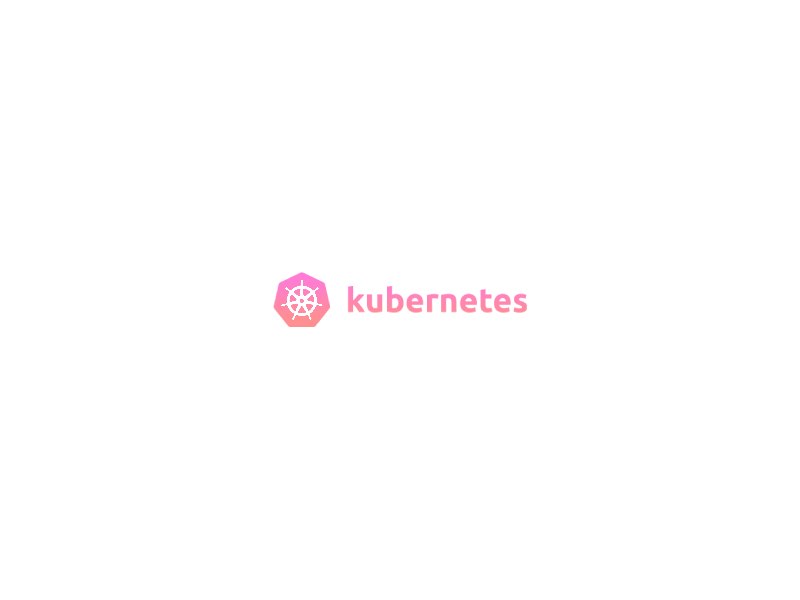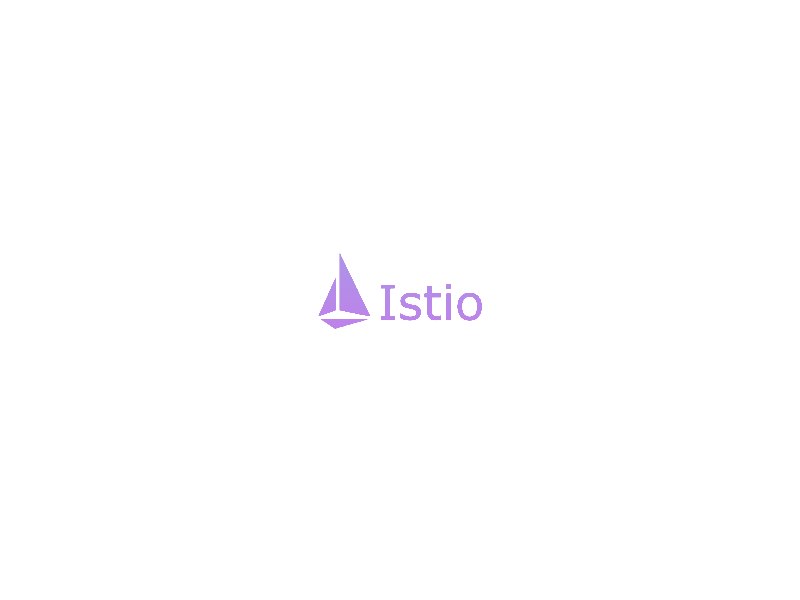Kubernetes, often abbreviated as K8s, is an open-source container orchestration platform that simplifies the deployment, scaling, and management of applications. It provides a robust infrastructure that allows you to easily deploy and maintain your web applications with surprising ease.
To begin the deployment process, you first need to containerize your web application. Containers offer a lightweight and consistent environment that encapsulates all the necessary dependencies, making it easy to deploy and run your application consistently across different platforms.
Once you have containerized your application, it’s time to leverage the power of Kubernetes. Start by creating a Kubernetes cluster, which consists of multiple worker nodes that will host your application. The cluster acts as a reliable and scalable foundation for your web applications, ensuring high availability and fault tolerance.
Next, you’ll define a Kubernetes Deployment object that describes the desired state of your application. This includes specifying the Docker container image, resource requirements, and any additional configurations. Kubernetes will then orchestrate the deployment, ensuring the desired number of replicas are running and automatically handling failures or scaling based on the defined policies.
Kubernetes also offers various built-in features to optimize the deployment of your web applications. For example, you can utilize Kubernetes Services to expose your application internally or externally, allowing seamless communication between different components. Additionally, you can leverage ConfigMaps and Secrets to manage your application’s configuration and sensitive information securely.
One of the key benefits of deploying web applications on Kubernetes is its ability to handle traffic efficiently. Kubernetes supports horizontal scaling, meaning you can easily add or remove replicas of your application based on the incoming load. This ensures that your application remains responsive and available even during high-traffic periods, providing a smooth user experience.
In conclusion, deploying web applications on Kubernetes provides a surprising explosion of efficiency, scalability, and reliability. By leveraging containerization and Kubernetes’ powerful orchestration capabilities, you can streamline your deployment process and focus more on developing innovative features for your applications. So why wait? Take the leap and embrace the world of Kubernetes to deploy your web applications with ease!
Remember, the key aspects of successful deployment are containerization, Kubernetes cluster creation, defining Deployment objects, utilizing built-in features, and achieving efficient traffic handling through scaling. Happy deployment!
Orchestrating Web Applications on Kubernetes: Best Practices
1. Understanding Kubernetes:
Before diving into best practices, let’s briefly touch upon what Kubernetes is all about. Imagine Kubernetes as the conductor of an orchestra, ensuring each component of your web application functions harmoniously. It automates the deployment, scaling, and management of containers across a cluster of computers, providing a scalable and resilient infrastructure for running your applications.
2. Containerizing Your Web Application:
To leverage the power of Kubernetes, it’s crucial to start by containerizing your web application. Containers encapsulate everything your application needs to run, making it portable, isolated, and efficient. By packaging your web application as a container, you can ensure consistent behavior across various environments and simplify the deployment process.
3. Leveraging Kubernetes Services:
Kubernetes offers powerful abstractions known as services, which enable seamless communication between components within your application. By defining services, you can expose your application to the outside world, handle load balancing, and ensure high availability. Leveraging services effectively is essential for creating a robust and accessible web application.
4. Scaling and Autoscaling:
One of the key advantages of Kubernetes is its ability to scale your web application effortlessly. Horizontal pod scaling allows you to increase or decrease the number of instances based on demand, ensuring optimal resource utilization. Implementing autoscaling based on metrics like CPU usage or request rate takes this a step further, automatically adjusting the application’s capacity to match traffic patterns.
5. Continuous Integration and Deployment:
To ensure a smooth development workflow, integrating Kubernetes with your CI/CD pipeline is vital. Automating the deployment process using tools like Jenkins, GitLab, or Spinnaker allows for faster and more reliable deployments, reducing human error and ensuring consistent releases. By adopting continuous integration and deployment practices, you can achieve seamless updates and rollbacks for your web applications.
In conclusion, orchestrating web applications on Kubernetes requires a solid understanding of its best practices. By embracing containerization, leveraging services, scaling effectively, and implementing CI/CD workflows, you can unlock the full potential of Kubernetes and create highly performant and resilient web applications. Embrace these best practices and get ready to witness the explosive power of Kubernetes in action, enabling you to conquer new heights in web application deployment.
Configuring and Managing Kubernetes Clusters for Web Application Deployment
Firstly, let’s demystify the process of configuring Kubernetes clusters. By carefully setting up your cluster, you lay the foundation for a seamless deployment experience. Start by defining the desired state of your applications using declarative configuration files. These files outline the resources required by your applications, such as pods, services, and ingress rules. Leverage the Active Voice, speaking directly to your audience, as you wield the power to configure your cluster to suit your unique needs.
Next, managing your Kubernetes clusters becomes a breeze with the right tools at your disposal. Explore the wide array of open-source management solutions like Kubernetes Dashboard, Rancher, or Lens. These tools provide intuitive user interfaces, allowing you to monitor the health of your cluster, track resource utilization, and easily scale your applications. Just imagine having full control at your fingertips, effortlessly steering your cluster towards smooth and efficient operation.
To engage the reader further, let’s draw an analogy between managing Kubernetes clusters and orchestrating a symphony. Each service, like different musical instruments, harmonizes together to create a melodious performance. Kubernetes acts as the conductor, ensuring every component performs its part precisely, resulting in a flawless application deployment. This comparison enhances comprehension while keeping the article conversational and engaging.
Furthermore, let’s address the question lingering in your mind: How does Kubernetes specifically cater to web application deployment? Well, imagine deploying your application across multiple replicas, allowing for scalability and high availability. Kubernetes effortlessly manages load balancing, ensuring that incoming requests are distributed evenly among your instances. This means your web application stays resilient even under heavy traffic, with no single point of failure.
In conclusion, configuring and managing Kubernetes clusters for web application deployment is a game-changer in the world of software development. By leveraging declarative configuration, utilizing management tools, and embracing the flexibility of scalability, you can achieve explosive results. So, buckle up and get ready to take your web applications to new heights with the power of Kubernetes!
Scaling Web Applications on Kubernetes: Strategies and Considerations
One of the key aspects of scaling web applications on Kubernetes is horizontal scaling. With Kubernetes, you can dynamically add or remove instances of your application based on demand. This means that as your user base grows or during peak periods, Kubernetes automatically scales your application horizontally by deploying additional replicas. This strategy ensures that your web application can handle higher loads without sacrificing speed or reliability.
To implement horizontal scaling, you need to define the appropriate metrics and thresholds. Kubernetes allows you to set up Horizontal Pod Autoscaling (HPA), which automatically adjusts the number of replicas based on CPU utilization, memory consumption, or custom metrics. By analyzing these metrics and setting sensible thresholds, you can ensure that your application scales efficiently, avoiding overprovisioning or underutilization of resources.
Another consideration when scaling web applications on Kubernetes is load balancing. Kubernetes provides built-in mechanisms for distributing incoming traffic across multiple replicas of your application. Through its service discovery and load balancing features, Kubernetes ensures that requests are evenly distributed, improving overall performance and preventing any single instance from being overwhelmed. Utilizing a load balancer also enables easy failover and high availability.
Additionally, containerized application architecture plays a crucial role in scaling web applications on Kubernetes. By breaking down your application into smaller, independent microservices, you can scale each component individually. This allows for granular control over resource allocation and optimization. With Kubernetes, you can deploy and manage these microservices effortlessly, leveraging its advanced scheduling and resource management capabilities.
Furthermore, when scaling web applications on Kubernetes, it’s essential to consider the underlying infrastructure. Provisioning sufficient resources, such as CPU, memory, and storage, is vital to accommodate the scaled application. Utilizing cloud providers or implementing Kubernetes on-premises with suitable hardware infrastructure ensures that your web applications have the necessary resources to handle increased demand effectively.
In conclusion, scaling web applications on Kubernetes requires careful planning and consideration of various strategies. By leveraging horizontal scaling, load balancing, microservice architecture, and provisioning appropriate resources, you can achieve seamless scalability while maintaining optimal performance. Kubernetes provides a robust platform for scaling your web applications, allowing you to dynamically adjust resources based on demand. Embrace the power of Kubernetes and unlock the potential of your web applications in today’s fast-paced digital landscape.
Securing Your Web Applications on Kubernetes: Best Practices
1. Use RBAC (Role-Based Access Control):
Implementing RBAC is essential in securing your Kubernetes cluster. By assigning specific roles and permissions to users, you can control access to your web applications and limit potential attack surfaces. This way, only authorized individuals will have the necessary privileges, reducing the risk of unauthorized access.
2. Regularly Update and Patch:
Stay up to date with the latest security patches and updates for both Kubernetes and the underlying infrastructure. Vulnerabilities can be exploited if you are running outdated software versions. Make sure to follow a regular update schedule and apply patches promptly to keep your system secure.
3. Employ Network Policies:
Kubernetes provides network policies that allow you to define rules for inbound and outbound traffic within your cluster. By configuring these policies effectively, you can segment your applications, restrict communication between different components, and minimize the impact of a potential breach.
4. Container Image Security:
When building your container images, ensure that you use trusted sources and regularly scan them for vulnerabilities. Utilize tools like Docker Security Scanning or Clair to identify any known security issues in your container images. Additionally, consider implementing image signing and verification to prevent the deployment of tampered or malicious images.
5. Implement Pod Security Policies:
Pod Security Policies (PSPs) define a set of security standards that pods must adhere to before they can run on your cluster. Enforcing PSPs helps prevent insecure configurations and ensures that only compliant pods are deployed, reducing the risk of exploitation.
6. Enable Audit Logging:
Kubernetes offers an audit logging feature that records all API requests and responses within your cluster. By enabling audit logging, you can gain visibility into the activities happening in your environment, detect suspicious behavior, and investigate potential security incidents.
7. Secure Secrets Management:
Properly managing secrets, such as API keys, passwords, or database credentials, is crucial for web application security. Kubernetes provides built-in mechanisms like Secret objects to store and distribute sensitive information securely. Make sure to encrypt your secrets and restrict access to only the relevant components that require them.
In conclusion, securing your web applications on Kubernetes requires a comprehensive approach that covers various aspects of your infrastructure and application stack. By following these best practices, you can enhance the security posture of your web applications and protect them from potential threats. Stay proactive, keep your systems up to date, and always prioritize security to ensure a safe and trustworthy environment for your users.
Continuous Integration and Deployment with Kubernetes: Streamlining the Process
In today’s fast-paced digital landscape, businesses are constantly seeking ways to streamline their software development processes to deliver high-quality applications faster than ever before. One approach that has gained significant popularity is Continuous Integration and Deployment (CI/CD) with Kubernetes. This powerful combination offers a seamless and efficient workflow for developers, enabling them to automate the integration, testing, and deployment of their code.
So, what exactly is Continuous Integration and Deployment? In simple terms, it is a software development practice that allows developers to merge their code changes into a shared repository frequently. By doing so, any conflicts or issues can be identified and resolved early on, ensuring a smooth integration process. Once the code is integrated successfully, CI/CD pipelines take over, automating the build, testing, and deployment stages.
Enter Kubernetes, an open-source container orchestration platform that has revolutionized the way applications are deployed and managed. Kubernetes provides a scalable and flexible infrastructure to run containers, allowing developers to package their applications and dependencies into self-contained units. These containers can then be easily deployed across different environments with minimal effort.
The marriage of CI/CD with Kubernetes brings significant benefits to the development process. Firstly, it allows for rapid and reliable deployments. With Kubernetes managing the deployment process, developers can ensure consistent application releases across various environments, reducing the risk of errors or discrepancies between development, staging, and production environments.
Secondly, CI/CD with Kubernetes enables efficient testing and quality assurance. Automated testing can be seamlessly integrated into the CI/CD pipeline, ensuring that every code change goes through a battery of tests before being deployed. This not only saves time but also improves the overall quality and stability of the application.
Moreover, CI/CD with Kubernetes promotes collaboration and visibility. Developers can work on different features or components simultaneously, merging their changes regularly. This fosters a culture of teamwork and reduces the time spent resolving conflicts.
In conclusion, Continuous Integration and Deployment with Kubernetes is a game-changer for software development. By automating the integration, testing, and deployment processes, developers can streamline their workflows, deliver applications faster, and maintain a high level of quality. With Kubernetes providing a robust and scalable infrastructure, CI/CD pipelines become even more powerful, enabling teams to achieve seamless deployments and efficient collaboration. Embracing this approach will undoubtedly empower businesses to stay ahead in today’s competitive digital landscape.
Monitoring and Logging in Kubernetes: Ensuring Application Performance
When we talk about monitoring in Kubernetes, we refer to the process of continuously observing the health and performance of your applications and infrastructure. By employing robust monitoring tools, you gain real-time insights into the behavior and resource consumption of your applications. This allows you to detect anomalies, track performance metrics, and identify potential bottlenecks. Monitoring helps you proactively address any issues that may impact your application’s performance and overall user experience.
In parallel, logging is another indispensable aspect of application performance management in Kubernetes. Logging involves capturing and storing relevant data from various sources within your cluster. By analyzing these logs, you can gain a comprehensive understanding of how your applications are behaving, identify errors or abnormalities, and troubleshoot effectively. Effective logging enables you to trace and debug issues promptly, leading to quicker problem resolution and improved application performance overall.
Proactive monitoring and logging in Kubernetes provide numerous benefits. Firstly, they allow you to optimize resource allocation, ensuring that each application within your cluster receives adequate resources for optimal performance. Additionally, by monitoring and logging your applications, you can identify and eliminate potential security threats, ensuring the overall stability and integrity of your system.
Monitoring and logging also facilitate capacity planning, allowing you to anticipate future resource requirements based on historical data trends. With this foresight, you can scale your infrastructure accordingly, avoiding performance degradation during peak usage periods and minimizing costs.
To ensure efficient monitoring and logging in Kubernetes, it is crucial to choose appropriate tools and implement best practices. There are various monitoring and logging solutions available, such as Prometheus, Grafana, and Elasticsearch, which offer powerful features for observing and analyzing your Kubernetes environment.
In conclusion, monitoring and logging are essential components of ensuring optimal application performance in Kubernetes. By effectively monitoring and logging your applications, you can detect issues early on, optimize resource allocation, enhance security, and plan for future scalability. Embracing these practices will enable you to unlock the full potential of your applications in a Kubernetes environment, delivering a seamless user experience and maximizing business productivity.




